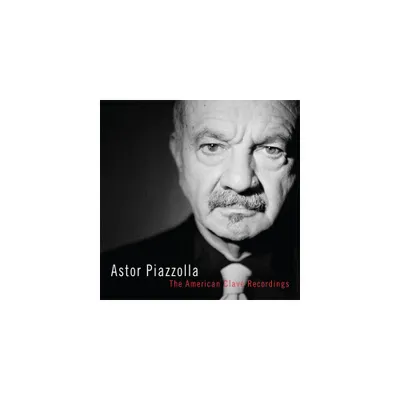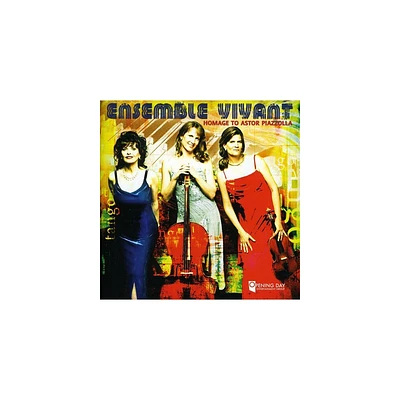Home
Astor Piazzolla
Loading Inventory...
Barnes and Noble
Astor Piazzolla
Current price: $23.99


Barnes and Noble
Astor Piazzolla
Current price: $23.99
Loading Inventory...
Size: OS
*Product Information may vary - to confirm product availability, pricing, and additional information please contact Barnes and Noble
The notes to this release by the ensemble
Escualo5
rightly point out that the imprint of
Bach
is strong in
Astor Piazzolla
's music, and one way the similarity manifests itself is in the malleability of both composers' works to arrangement for new combinations of instruments. Since the revival of
Piazzolla
's music began in earnest in the late '90s, he has been heard in almost every conceivable medium, from flute and guitar to full symphony orchestra. Re-creations of
's original quintet of bandoneon, violin, guitar, piano, and double bass have appeared as well, some of them from
's Argentine followers. Listeners may see that lineup in the graphics for this release by the ensemble
and might conclude that it's a neo-traditional experiment, but that's not really what's happening. First, note that keyboardist
Alexander Kuralionok
uses not the bandoneon but the more powerful accordion, and he is matched by a big, virtuoso sound from the other players. Several of the pieces are arranged for new combinations, the
Tango Suite for guitar and piano
, and the
Histoire du Tango
, the masterful tracing of tango styles since 1900, for accordion, guitar, and double bass. The biggest thing is that without violating
's musical texts, the group brings to his music a new and intense spirit. It is as if, having been established as part of the classical canon,
's music is now subject to what has been called the chain of interpretation. It's a tremendously exciting release, consisting of
standards like the
Primavera Portena
from the
Cuatro Estaciones Portenas
and lesser-known pieces like
Fracanapa
;
adds something new to every single one, and the album will appeal to heavy
collectors and newbies alike. ~ James Manheim
Escualo5
rightly point out that the imprint of
Bach
is strong in
Astor Piazzolla
's music, and one way the similarity manifests itself is in the malleability of both composers' works to arrangement for new combinations of instruments. Since the revival of
Piazzolla
's music began in earnest in the late '90s, he has been heard in almost every conceivable medium, from flute and guitar to full symphony orchestra. Re-creations of
's original quintet of bandoneon, violin, guitar, piano, and double bass have appeared as well, some of them from
's Argentine followers. Listeners may see that lineup in the graphics for this release by the ensemble
and might conclude that it's a neo-traditional experiment, but that's not really what's happening. First, note that keyboardist
Alexander Kuralionok
uses not the bandoneon but the more powerful accordion, and he is matched by a big, virtuoso sound from the other players. Several of the pieces are arranged for new combinations, the
Tango Suite for guitar and piano
, and the
Histoire du Tango
, the masterful tracing of tango styles since 1900, for accordion, guitar, and double bass. The biggest thing is that without violating
's musical texts, the group brings to his music a new and intense spirit. It is as if, having been established as part of the classical canon,
's music is now subject to what has been called the chain of interpretation. It's a tremendously exciting release, consisting of
standards like the
Primavera Portena
from the
Cuatro Estaciones Portenas
and lesser-known pieces like
Fracanapa
;
adds something new to every single one, and the album will appeal to heavy
collectors and newbies alike. ~ James Manheim







![Astor Piazzolla: Libertango [Warner Classics]](https://prodimage.images-bn.com/pimages/0190295082772_p0_v2_s600x595.jpg)










